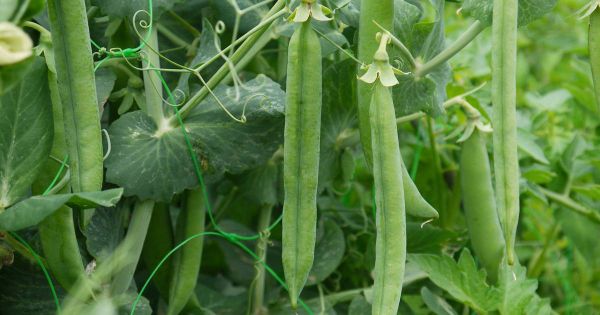Peas


Introduction
Peas are one of the best vegetables to start growing, as the reward of eating raw freshly picked peas is magnificent, and popular amongst all members of a family – even the youngest.
Yet growing peas can also be a little challenging: birds love them; they require support; germination can be hit and miss; and they require frequent watering at key periods to produce a bumper crop.
Planting
- Planting depth: 5 cm
- Planting spacing: 10 cm between plants, 45 cm between rows
Harvesting
- Pick regularly to encourage more flowers to set
- Eat fresh, or alternatively shell, blanch, and freeze
(inside)
(outside)
(fresh)
(stored)






 = freeze,
= freeze,  = store
= store
Varieties
There are many varieties of peas to choose from including early and maincrop types, and the delicious and sweet tasting mangetout and sugar snap varieties. Early types are sometimes divided into first earlies and second earlies, the main difference being the time the plants take to harvest, with first earlies (as the name suggests) providing their crop approximately two weeks before second earlies. First earlies take approximately 3 months to reach harvest, whereas maincrop varieties need an extra month.
Peas are also described as round or wrinkled, which relates to the appearance of the seed. The smooth round peas are said to be more hardy. In practice, many gardeners wait until the weather warms up before planting either type.
There are dwarf varieties of peas available. Whereas standard peas are natural climbers, and therefore require tying to supports like a waist high wigwam frame, dwarf varieties grow up to 45 centimetres and only need simpler supports like upright canes. Dwarf varieties are great where space is limited, and grow well in pots and containers.
The easy way for a gardener to organise their growing and discover gardening ideas.
Growing
All varieties of peas are planted at about the same time of year from March onwards. Peas do not germinate well in cold and wet soil, so it is best to wait until the weather warms in the spring before planting outdoors.
For an early sowing in February, peas can be protected using plastic cloches or inside a plastic greenhouse or polytunnel. It is also possible to sow peas in the autumn for overwintering to provide a spring harvest. If doing this, the peas will need the protection of a cloche or plastic grow tunnel.
Protected young pea plants from birds is essential to achieve a harvest. The sweet tasting leaves of young plants are loved by birds, and pigeons in particular. Without a net, once the plants have been found by birds, it is likely that their leaves will be completely stripped off, setting the plants back considerably or killing them altogether.
The easiest types of pea to grow are mangetout and sugar snap varieties, which are eaten as whole pods rather than shelled for their peas. Mangetout varieties are eaten when the pods are formed, at about three inches or 7.5 centimetres in length, but with the pods still flat. Sugar snap varieties are eaten when the peas are fully formed inside the pods.
Freshly sown peas should germinate within three weeks in the spring, or two weeks in the summer, provided that they are well protected. With good luck, the peas should really start to get going with the warmer spring weather. They do not need protection from the cold, but regular watering is important to ensure that the ground never dries out (over watering may result in too much leaf growth).
When the plants unfurl their flowers, it is time to step up the watering, to help swell the pods and encourage more flowers to set. Pods should be picked as soon as they mature, as this will encourage the plants to carry on being productive and provide a bigger and longer harvest period.
